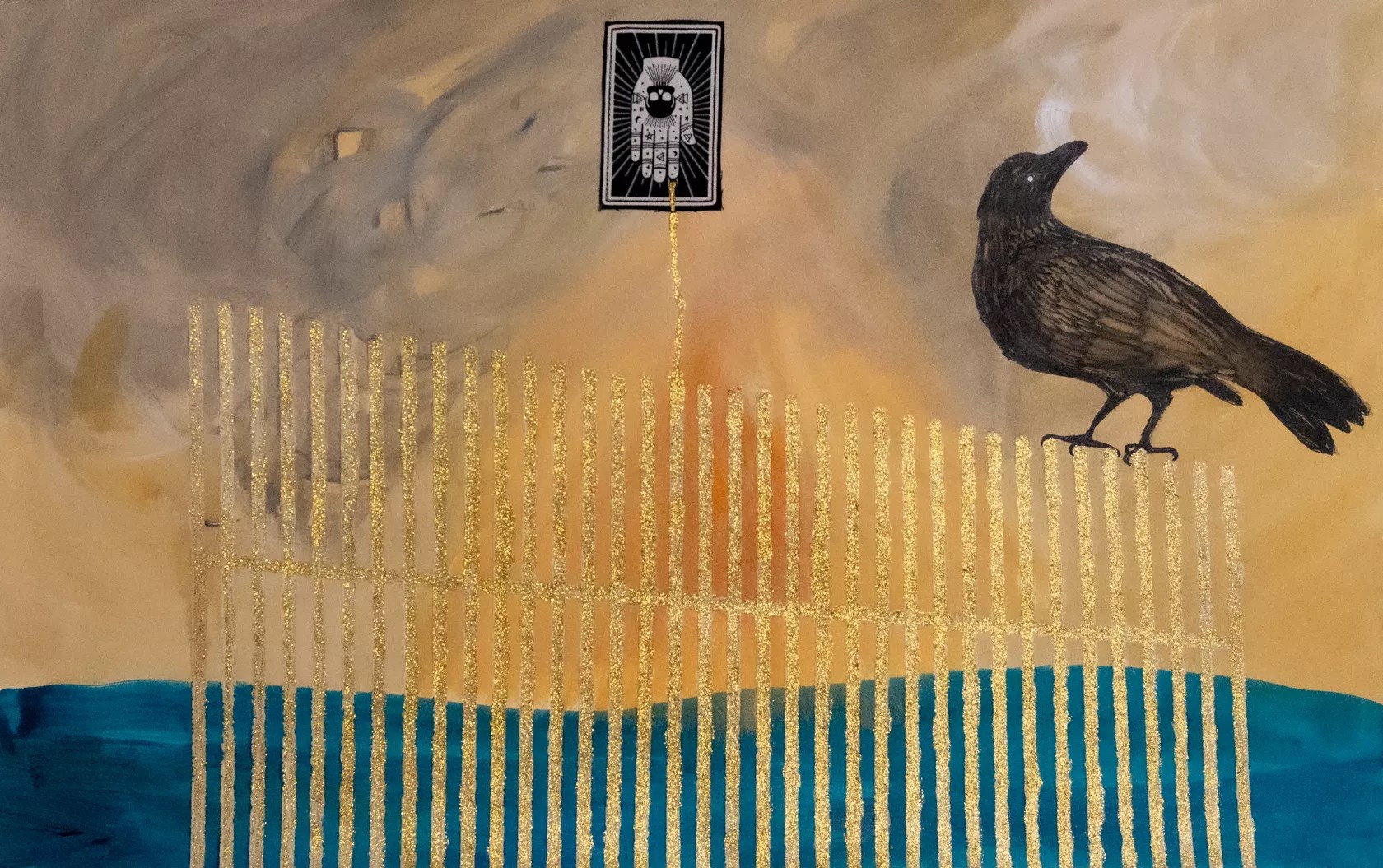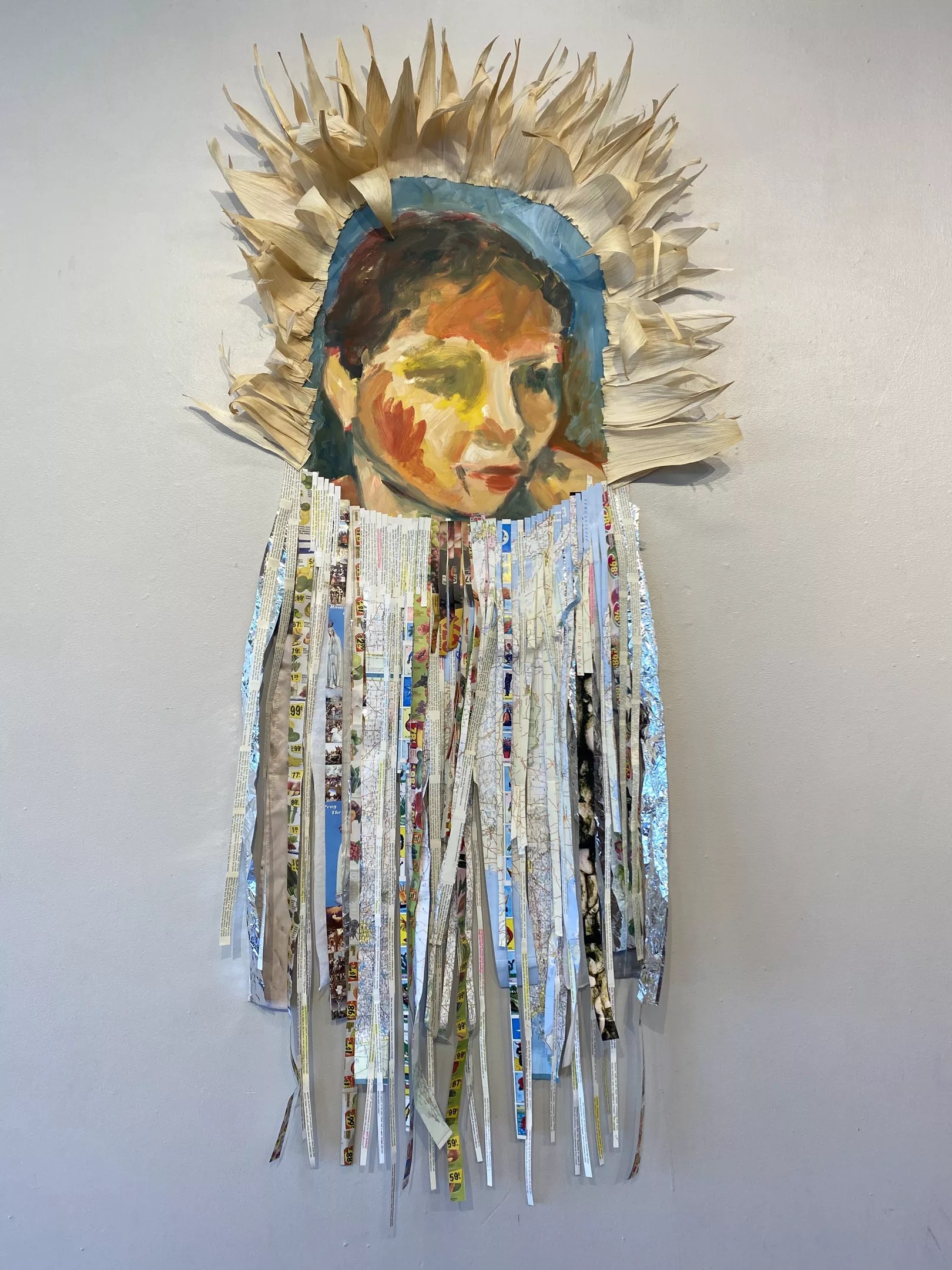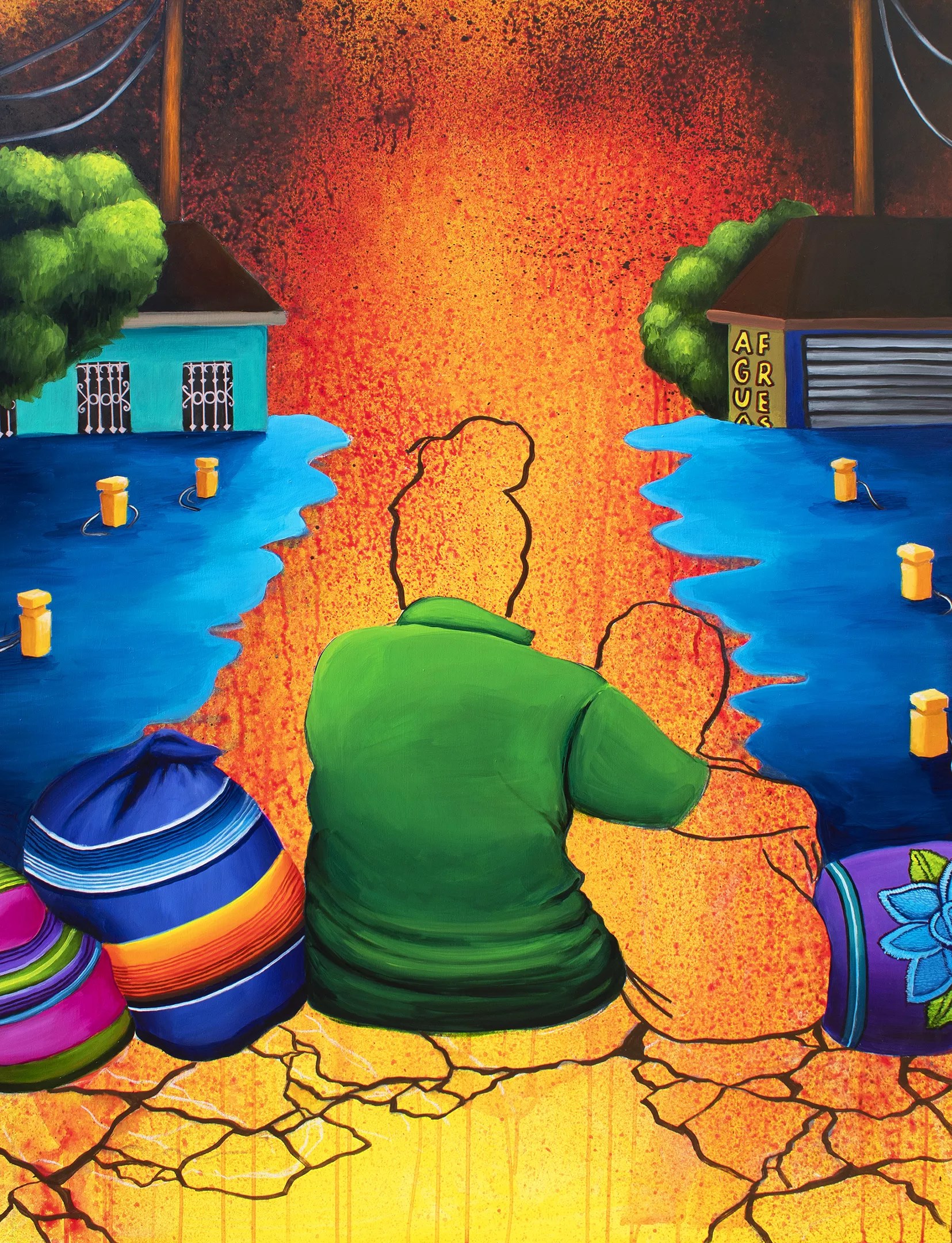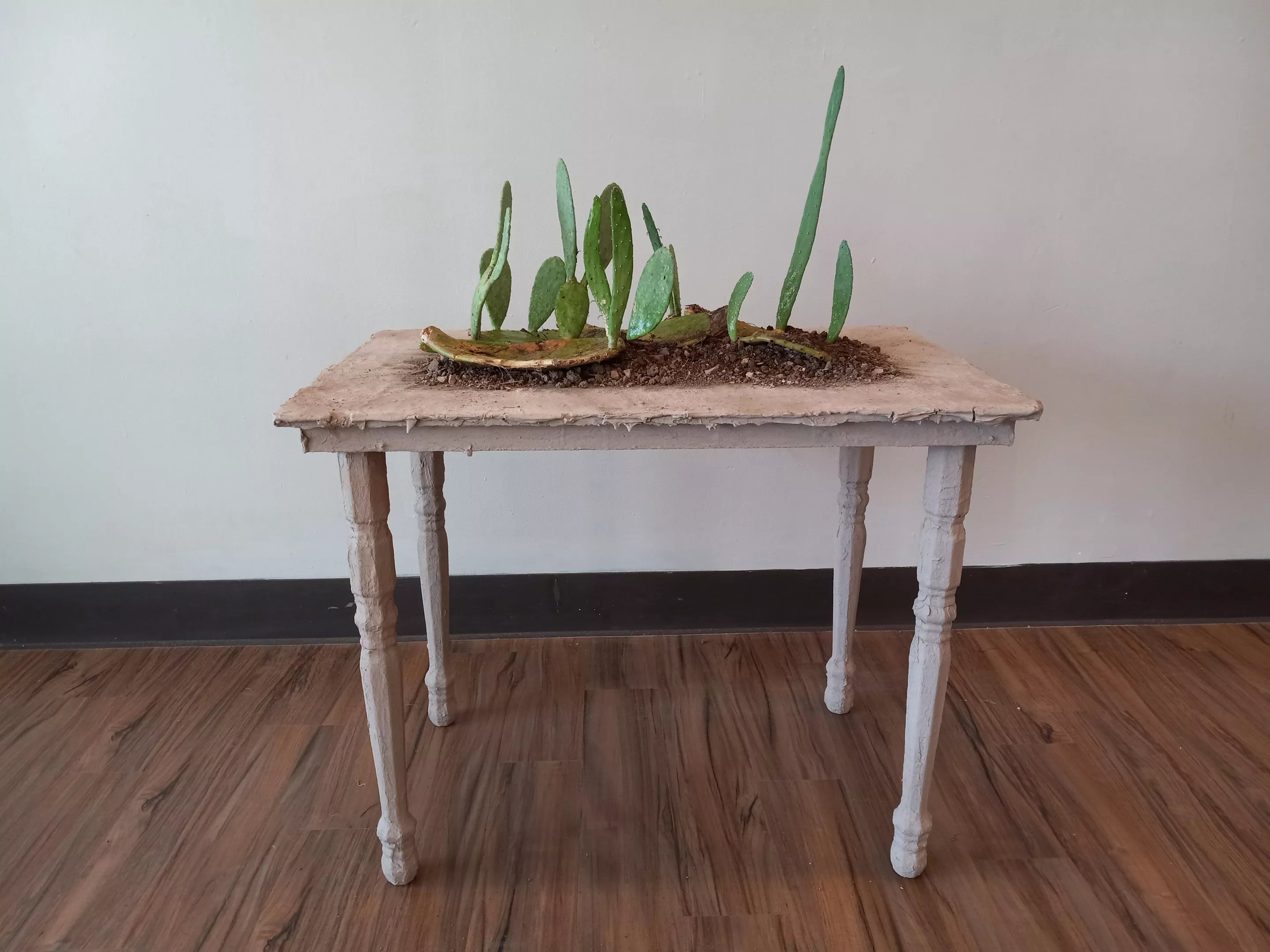
Tesa Morin

Audio By Carbonatix
Even if you’re nowhere near it, the U.S.-Mexico border is inescapable in Texas. Nearly every aspect of Texas life has been touched by the history, politics and economics that have been influenced by the close proximity to the border. Dallas’ Nuestra Artist Collective will explore border relations through the often omitted lens of Latina artists with its inaugural exhibition, Fronteriza.
The multi-medium exhibition opens Oct. 1 at the Oak Cliff Cultural Center and will run through Nov. 4. Through this exhibition, Nuestra Artist Collective wants to facilitate border discourse and conversations surrounding the experiences of Latinas and Xicanas, Mexican-American women born in the U.S.
Fronteriza explores these perspectives through nine female Texas artists: Melissa Gámez-Herrera, Karla García, Sara Herrera, Tina Medina, Analise Minjarez, Eliana Miranda, Tesa Morin, Lupita Murillo Tinnen and Sarita Westrup.
“There’s a larger history to the United States and Mexico where this was Mexico before,” Nuestra Artist Collective co-founder Tina Medina says. “Some of us don’t understand that the people didn’t necessarily cross the border, the border crossed them. There’s a history there that’s not being taught, or it’s being ignored.”
Will you step up to support Dallas Observer this year?
At the Dallas Observer, we’re small and scrappy — and we make the most of every dollar from our supporters. Right now, we’re $15,250 away from reaching our December 31 goal of $30,000. If you’ve ever learned something new, stayed informed, or felt more connected because of the Dallas Observer, now’s the time to give back.
As Texas’ demographics become increasingly multicultural, Medina says it’s important for Texans to understand each other’s histories, and to work and play together.

The multimedia work “Ancestra” by Tina Medina, a Xicana artist.
Tina Medina
The U.S. Census Bureau estimates Hispanic Texans have now become the state’s majority population, according to The Texas Tribune. But that majority doesn’t stem from one source. Hispanic Texans include a variety of heritages and cultures with their own histories and traditions.
Fronteriza centers on the voices of Xicana and Latina women. Many identify as Nepanthla, which means “in the middle,” referring to two cultures. U.S.-born Mexican-Americans often live in an in-between state, with a connectedness to both soils. Despite living in the U.S., their awareness of the border is perpetual.
Nuestra Artist Collective was founded on such experiences by Medina, Karla García and Eliana Miranda. Medina and García, both Dallas College Mountain View art professors, bonded over their identities. Over coffee, they often discussed the limbo in which they felt they lived and how their art spoke to it.
“For me, it’s not about knowing my family heritage, it’s about not knowing my family heritage and being disconnected and cut off from any family from Mexico,” Medina says. “I have no knowledge of my family from Mexico.”
Medina, one of five 2022 Nasher Artist Grant recipients, looks at this disconnect through multiple media including fibers, painting, video and audio assemblages. She says she’s often invited to display her works at exhibitions during Cinco de Mayo and Hispanic Heritage Month.
“As an artist, a Chicana Latina artist, that tells me that my work is not as important,” Medina says. “It’s only cute during those months.”
Medina and García dreamed of amplifying Latina and Chicana artistic voices and breaking beyond the idea of inclusivity. They wanted to start conversations led by Hispanic women. They onboarded their coworker, professor and visual artist Eliana Miranda, and got to work.
“We are all researchers, we’re professors, we’re artists and we’re interested in social justice themes in the border, and also understanding the intricacies of our cultural heritage,” García says. “We felt like it was important for us to start this collective with that mission, specifically to create exhibitions and projects that can amplify that.”

Texas artist Eliana Miranda plays with the border theme for the exhibition Fronteriza.
Eliana Miranda
Through her art, García explores the borderland in relation to landscape. Her sculpture “Vida” will be on display in Fronteriza, Through clay, ceramics, found materials symbolic of her heritage and photography, García depicts Mexican culture and pays tribute to the border landscape. Her binational art installation “La Línea Imaginaria” is simultaneously on display at the Chamizal National Memorial in El Paso and Parque Público El Chamizal in Ciudad Juárez, Mexico, until Nov. 22.
García, who was born in Juarez and migrated to El Paso at 13, sees no difference in the desert landscape of Juarez and El Paso.
“To me, it is one and the same, and the two cities call each other sisters,” she says.
Fronteriza has been in the works for a year. Each artist will bring a personal perspective to political, labor, migration, environmental, historical and social justice themes through media such as ceramics, fibers, textiles, basketry, painting, drawing, photography and video. The opening reception at 6 p.m. on Oct. 1 will feature a performance incorporating movement, dance and music by Medina and Fort Worth dancer Sara Herrera.
Nuestra Artist Collective will continue to engage the community through other interactive events. On Oct. 15, Dreamers Mercado will present a market with Latin vendors including Flores BakeHaus, Human Rights Initiative, Whose Books, Pinky’s Summer, Emily and Carlos Don Juan and Refugee Services of Texas.
On Oct. 21, for Conchas y Conversaciones, the collective will collaborate with bakery Más Que Pan with a bread-sharing event called “Break Bread, Break Borders” to prompt storytelling and conversation about immigration.
“Start thinking about issues about the border because it affects us all and it continues to affect us,” Medina says. “It’s not just one person, it’s not so removed. It’s part of people, it affects people that you may not even know it affects. You think that it doesn’t affect you, but it does.”

Karla Garcia gives us “Vida” with her sculpture at the Oak Cliff Cultural Center.
Karla Garcia